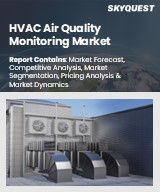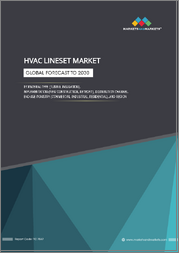
|
시장보고서
상품코드
1847700
HVAC 포함 서버 시장 : 시스템 유형, 용량 계층, 드라이브 유형, 용도, 설치 유형별 - 세계 예측(2025-2032년)HVAC Contained Server Market by System Type, Capacity Tier, Drive Type, Application, Installation Type - Global Forecast 2025-2032 |
||||||
HVAC 포함 서버 시장은 2032년까지 연평균 복합 성장률(CAGR) 12.90%로 354억 1,000만 달러에 이를 것으로 예측됩니다.
| 주요 시장 통계 | |
|---|---|
| 기준 연도 : 2024년 | 134억 달러 |
| 추정 연도 : 2025년 | 151억 6,000만 달러 |
| 예측 연도 : 2032년 | 354억 1,000만 달러 |
| CAGR(%) | 12.90% |
데이터센터 구축 트렌드, 엣지 컴퓨팅의 도입, 기업의 지속가능성 요구가 냉각, 내결함성, 총소유비용에 대한 조직의 사고방식을 재구성하기 위해 집약되면서 개폐식 서버 HVAC 시스템은 변곡점을 맞이하고 있습니다. 지금까지 서버 냉각은 고밀도 랙을 격리하고 주변 환경으로부터 컴퓨팅 자산을 보호해야 하는 긴급한 요구에 부응해 왔습니다. 그러나 이제 냉각 시스템은 변화하는 부하 프로파일에도 예측 가능한 열 성능을 제공하고, 건물의 에너지 관리 시스템과 통합되어야 하며, 효율을 저하시키지 않으면서도 빠른 확장성을 지원해야 합니다.
그 결과, 조달 및 엔지니어링 팀은 모듈성, 유지보수성, 다양한 컴퓨팅 실적와의 호환성을 제공하는 솔루션을 우선순위에 두고 있습니다. 이러한 전환은 랙 밀도 증가, 코로케이션과 프라이빗 클라우드를 결합한 IT 토폴로지의 진화, 전력 사용 효율성과 탄소 배출에 대한 모니터링 강화로 인해 가속화되고 있습니다. 한편, 벤더들은 기계 및 전기 통합 강화, 표준화된 보관 패키지, 평균 수리 시간을 단축하는 원격 진단 등으로 대응하고 있습니다. 그 결과, 구매자는 선행 설비 투자, 수명주기 운영 비용, 기술 노후화에 대한 미래성 사이의 균형을 맞추는 보다 복잡한 의사결정 매트릭스에 직면하게 됩니다.
앞으로의 채택 곡선은 제조업체와 시스템 통합사업자가 얼마나 효과적으로 운영 투명성을 확보하고, 시운전을 간소화하며, 제품 로드맵을 기업의 지속가능성에 대한 약속과 규제 목표에 맞게 조정하는지에 따라 달라질 것입니다. 이러한 역학을 이해하는 것은 단기적인 도입 압력과 장기적인 인프라 복원력 목표를 조화시켜야 하는 이해관계자들에게 필수적입니다.
냉각 아키텍처를 재정의하는 혁신적 변화 특정 액체 냉각의 통합 AI 기반 제어 및 에너지 효율과 컴퓨팅 밀도의 상호관계로 냉각 아키텍처 재정의
서버 냉각 환경은 기술 발전, 규제 상황, 컴퓨팅 경제성의 변화로 인해 크게 변화하고 있습니다. 가장 주목할 만한 점은 서버의 전력 밀도가 높아지고 시스템 설계자들이 에너지 전달 효율을 우선시함에 따라 수냉식 냉각 방식이 틈새 고밀도 솔루션에서 주류 옵션으로 전환되고 있다는 점입니다. 동시에 AI 워크로드와 엣지 컴퓨팅 아키텍처의 급증은 기존의 공랭식 냉각 패러다임에 도전하는 이질적인 열 프로파일을 만들어내고 있습니다.
이와 동시에 제어 시스템은 더욱 지능적이고 연결성이 높아졌습니다. 머신러닝 기반 제어 및 예지보전 프레임워크를 통해 동적 열 관리 및 용량 최적화가 가능해졌습니다. 이러한 디지털 기능을 통해 다운타임을 줄이고, 냉각 시스템이 과도한 위험 없이 열역학적 한계에 가깝게 작동할 수 있게 되었습니다. 동시에 모듈화 및 격납용기의 조립식화로 도입 주기가 단축되어 분산된 시설 전체에서 재현 가능한 결과를 얻을 수 있게 되었습니다.
또 다른 큰 변화는 순환성과 냉매 관리에 대한 중요성이 높아졌습니다는 점입니다. 지구온난화지수에 대한 규제 강화와 특정 냉매에 대한 단계적 규제 강화로 인해 저 GWP 냉매와 대체 열역학 사이클의 채택이 가속화되고 있습니다. 그 결과, 냉매의 재생 가능성, 개조 용이성, 향후 냉매 변경에 대한 적응성 등 라이프사이클에 대한 고려가 제품 설계 및 조달 기준의 중심이 되고 있습니다.
이러한 변화를 종합해 보면, 분야 간 엔지니어링, 소프트웨어 기반 제어, 지속 가능한 소재 선택이 승자와 패자를 가르는 시장이 될 것임을 알 수 있습니다. 모듈화되고 상호 운용 가능한 디지털 대응 솔루션에 조기에 투자하는 이해관계자들은 도입 규모가 확대됨에 따라 불균형적인 운영 가치를 얻게 될 것으로 보입니다.
2025년 제정된 미국의 관세 조치가 부품 조달 및 전략적 자본 배분 결정에 미치는 누적 영향 평가, 조달 공급망 강건성 확보를 위한 부품 조달 및 전략적 자본 배분 결정에 미치는 영향 평가
2025년에 시행된 미국의 관세 조치는 공급망, 조달 전략 및 서버용 HVAC 시스템의 자본 계획에 파급 효과를 가져왔습니다. 일부 수입 부품에 대한 관세 인상으로 냉동고, 열교환기 및 액세서리 부품의 상륙 비용이 상승하여 많은 구매자가 장비의 정가에만 의존하지 않고 공급업체 선정 기준과 총 납품 비용을 재평가하도록 촉구했습니다. 이에 따라 일부 공급업체는 중요한 서브 어셈블리의 현지화를 가속화하고, 일부 공급업체는 관세의 영향을 줄이기 위해 세계 조달을 재구축했습니다.
이러한 조정은 비단 조달에만 국한된 것이 아닙니다. 프로젝트 타임라인과 컨틴전시 계획은 잠재적인 관세 지연과 물류 패턴의 변화를 고려하여 재조정되었습니다. 그 결과, 라이프사이클 비용 분석은 공급업체 발자국의 탄력성과 공급 충격을 흡수할 수 있도록 설계된 재고 전략에 중점을 두게 되었습니다. 대기업의 경우, 관세 중심의 비용 압박으로 인해 국경 간 관세 부담을 줄이기 위해 제조 가능한 설계와 지역별로 제조 가능한 모듈식 시스템에 대한 관심이 가속화되고 있습니다.
또한, 관세는 니어쇼어링과 장기적인 공급 다변화에 대한 논의를 심화시키고 있습니다. 이해관계자들은 멀티소싱 접근 방식을 평가하고, 지정학적 요인에 따른 비용 변동에 따른 가격 조정 메커니즘과 공급업체 성과 조항과 같은 계약상 안전장치를 마련하고 있습니다. 이러한 변화는 복잡성을 야기하는 한편, 투명한 비용 구조, 민첩한 제조, 견고한 컴플라이언스 체제를 입증하고 노출을 줄이고 조달을 단순화할 수 있는 공급업체에게는 기회가 될 수 있습니다.
구매자의 우선순위를 형성하기 위해 시스템 유형, 용량 계층, 기술 용도의 수직적 방향과 설치 선택이 교차하는 지점을 파악하는 부문별 통찰력
시장 세분화에 대한 정확한 이해는 서버용 HVAC 솔루션의 제품 전략과 시장 진입 계획을 수립하는 데 있어 매우 중요합니다. 시스템 유형이라는 렌즈를 통해 세분화를 살펴보면, 공냉식 아키텍처와 수냉식 아키텍처를 구분하는 것이 중요합니다. 공랭식은 직접 팽창 방식과 글리콜 루프 방식으로 나뉘며, 각각 에너지 효율, 유지보수성, 개조 복잡성 측면에서 서로 상충하는 관계가 있습니다. 또한, 수냉식 시스템은 냉수 및 냉각탑 루프로 나뉘며, 이는 현장의 인프라 의존성과 통합의 복잡성에 따라 달라집니다.
용량 계층별 세분화를 통해 대용량, 중용량, 소용량 설비별로 가치 제안이 다르다는 것을 알 수 있었습니다. 대용량 시스템에서는 강력한 이중화, 고도의 제어, 확장 가능한 서비스 계약이 요구되는 반면, 소용량 시스템에서는 도입의 용이성, 시운전 오버헤드 감소, 유지보수 경로의 단순화가 우선시됩니다. 고정 속도 드라이브와 가변 속도 드라이브를 구분하는 드라이브 유형 세분화는 운전의 유연성과 에너지 성능에 직접적인 영향을 미칩니다. 가변형 드라이브는 보다 세밀한 제어와 부분 부하 효율을 향상시키는 반면, 고정형 드라이브는 초기 비용과 복잡성을 줄일 수 있습니다.
용도 기반 세분화는 제품의 특징을 최종 사용자의 운영 요구 사항에 맞게 조정하여 시장의 초점을 더욱 세분화합니다. 상업용 건물에는 조용한 동작, 미관, 건물과의 통합을 중시하는 오피스 빌딩과 상점이 포함됩니다. 데이터센터용도는 코로케이션, 엔터프라이즈, 하이퍼스케일 환경으로 나뉘며, 각각 SLA, 가동시간 기대치, 확장 패턴이 다릅니다. 산업 시설에는 자동차 부지 및 제조 공장이 포함되며, 환경적 견고성 및 공장 에너지 시스템과의 통합이 우선시됩니다. 통신 시설에서는 기지국이나 통신 스위치 룸이 있어, 컴팩트한 설치 공간과 원격 모니터링 기능이 요구됩니다.
마지막으로, 신축과 개보수 설치 유형의 구분은 엔지니어링 결정과 상업적 모델을 촉진합니다. 신축의 경우, 최적화된 레이아웃과 통합 시스템을 활용할 수 있지만, 리노베이션의 경우, 적응성 있는 모듈, 다운타임이 적은 시운전 기술, 명확한 전환 경로가 필요합니다. 이러한 세분화 계층이 어떻게 상호 작용하는지를 이해함으로써 공급자와 구매자는 제품 개발, 서비스 제공, 상거래 조건을 각각의 도입 형태에 맞는 필요에 맞게 조정할 수 있습니다.
설계 표준 규정 준수 및 서비스 모델에 영향을 미치는 아시아태평양, 유럽, 중동 및 아프리카의 지역적 역학 및 전개 패턴
지역 역학은 수용형 서버 HVAC 시스템의 설계, 배치, 서비스 모델에 큰 영향을 미칩니다. 북미와 남미에서 사업자들은 레거시 데이터센터와 급속한 엣지 확장에 직면하고 있으며, 이에 따라 레트로핏 솔루션과 분산된 컴퓨팅 노드를 수용할 수 있는 컴팩트한 모듈형 유닛에 대한 수요가 증가하고 있습니다. 에너지 가격, 효율성 향상을 위한 인센티브 프로그램, 주정부 차원의 환경 규제가 제품 기능의 우선순위와 총 운영 비용 평가를 형성하고 있습니다.
유럽, 중동 및 아프리카에는 냉매 선택, 음향 제약 및 내결함성 계획에 영향을 미치는 다양한 규제 상황과 기후가 존재합니다. 일부 유럽 시장에서는 적극적인 탄소 감축 프레임워크와 엄격한 냉매 규제로 인해 저 GWP 솔루션과 열 재사용 전략에 대한 채택이 증가하고 있습니다. 중동 및 아프리카 일부 지역에서는 극한의 환경 조건과 제한된 수자원으로 인해 물 절약 설계와 공기와 액체를 혼합한 하이브리드 냉각 방식에 대한 기술 혁신이 촉진되고 있습니다.
아시아태평양에서는 일부 시장에서는 초대형 확장이 이뤄지는 반면, 다른 시장에서는 소규모로 빠르게 도입할 수 있는 엣지 장비가 도입되는 등 다양한 성숙도 수준을 보이고 있습니다. 각 지역의 제조 능력, 저비용 자본에 대한 접근성, 다양한 전력망의 신뢰성 프로파일이 다양한 시스템 요구 사항에 기여하고 있습니다. 각 지역마다 서비스 모델과 예비 부품 공급이 크게 다르기 때문에 애프터서비스 지원과 현지 기술력은 조달팀에게 결정적인 요소입니다.
어느 지역이든 현지 에너지 시스템과의 상호운용성, 지역 표준에 대한 적합성, 숙련된 서비스 파트너의 존재 여부가 결정적인 고려사항이 됩니다. 지정학적 및 무역 정책의 역학관계는 공급업체 전략과 최종 사용자의 의사결정에 더욱 영향을 미치며, 지역 적응성과 공급망 투명성의 중요성을 강조하고 있습니다.
경쟁 구도와 기업 전략 고찰: 제품 혁신 채널 전략 시장 포지셔닝을 결정하는 M&:A 트렌드와 파트너쉽
제조업체와 통합업체의 기업 전략은 모듈형 제품 플랫폼, 디지털 서비스 제공, 에코시스템 파트너십이라는 몇 가지 핵심 테마로 집약되고 있습니다. 제품 로드맵은 지속적인 성능 최적화를 실현하고 서비스 기반의 상업적 모델을 가능하게 하기 위해 빌딩 관리 시스템 및 타사 원격 측정 플랫폼과의 상호 운용성을 우선시하는 경향이 강해지고 있습니다. 동시에 공급업체는 원격 진단 및 응답 시간 보장부터 고부가가치 고객을 위한 풀 매니지드 쿨링 서비스까지 전문 서비스 계층을 통해 차별화를 꾀하고 있습니다.
벤더가 시장 출시 시간을 단축하고 최종 고객의 통합 리스크를 줄이기 위해 부품 공급업체와 시스템 통합사업자의 전략적 제휴가 확산되고 있습니다. 이러한 협력 관계는 종종 조달과 시운전을 간소화하는 효과적인 솔루션 블록에 초점을 맞추고, 공동 보증 및 번들 서비스 계약은 고객의 신뢰를 향상시킬 수 있습니다. 동시에, 자금 조달 및 서비스형 에너지 모델도 확산되고 있으며, 고객은 자본 지출을 운영 예산으로 전환하여 실현된 에너지 절감과 비용을 일치시킬 수 있습니다.
경쟁 역학은 애프터마켓 지원 능력에도 영향을 미칩니다. 주요 지역에 탄탄한 예비 부품 네트워크와 공인 서비스 파트너를 보유한 공급업체는 고객 라이프사이클을 연장하고 서비스 수익을 향상시킬 수 있습니다. 또한, 현장에서 검증된 디지털 트윈 및 분석 플랫폼에 투자하는 기업은 측정 가능한 업무상의 이점을 보여줄 수 있기 때문에 가격보다 가치로 차별화를 꾀할 수 있습니다. 리더에게 필수적인 것은 하드웨어의 우수성과 강력한 라이프사이클 서비스, 구매자의 리스크를 줄여주는 투명한 성능 보증을 결합하는 것입니다.
업계 리더들이 제품 포트폴리오를 최적화할 수 있는 실행 가능한 권장사항 공급망 고객 참여 리노베이션 프로그램 지속가능성 로드맵 제공
업계 리더는 가치를 획득하고 하방 위험을 줄이기 위해 일련의 실용적인 행동을 취해야 합니다. 첫째, 제품 설계에서 모듈화를 우선시하여 신속한 도입, 예측 가능한 시운전 결과, 레거시 시설에 대한 간소화된 개조 옵션을 지원합니다. 둘째, 예지보전을 가능하게 하고 서비스 계약을 지원하는 검증 가능한 운영 지표를 제공하기 위해 처음부터 고급 제어 시스템과 원격 진단을 통합합니다.
다음으로, 여러 공급업체를 인증하고 지역 조립 및 니어쇼어링 기회를 평가하여 지정학적 및 관세 노출을 줄이기 위해 조달 전략을 다양화합니다. 이러한 노력은 상품과 관세의 변동을 고려한 계약 조항으로 보완됩니다. 또한, 인센티브를 조정하고 고객과의 관계를 강화하기 위해 성과 기반 계약 및 이행 보증을 포함한 서비스 제공을 확대합니다. 이러한 모델은 반복적인 수익원을 창출하고, 평생 고객 가치를 향상시킵니다.
리더는 인재 육성과 파트너 생태계에도 투자해야 합니다. 인증된 설치업체 및 서비스 기술자를 위한 교육 프로그램은 디지털 진단 도구와 함께 평균 수리 시간을 단축하고 가동률을 향상시키는 데 도움이 됩니다. 동시에 제어기기, 소프트웨어, 에너지 관리 벤더와의 전략적 파트너십을 추구하여 고객의 애로사항을 엔드 투 엔드(end-to-end)로 해결하는 통합 솔루션을 제공합니다. 마지막으로, 진화하는 규제와 기업의 ESG에 대한 기대에 맞추어 저GWP 냉매, 재활용성, 에너지 회수 기능을 우선순위에 두어 지속가능성을 제품 로드맵에 반영할 것입니다.
엄격한 조사 결과를 보장하기 위해 1차 인터뷰-공급망 매핑 기술 평가와 검증 프로토콜을 결합하는 방법을 개괄하는 조사 기법
이 조사는 심층적인 통찰력과 상호 검증의 엄격함의 균형을 맞추기 위해 설계된 혼합 방법론적 접근 방식을 사용합니다. 1차 입력에는 데이터센터, 상업, 산업, 통신 분야의 수석 엔지니어 리더, 조달 전문가, 운영 관리자와의 구조화된 인터뷰가 포함됩니다. 이러한 대화를 통해 정량적 데이터 세트만으로는 알 수 없는 도입 촉진요인, 서비스에 대한 기대, 조달 제약에 대한 질적 배경을 얻을 수 있었습니다.
2차 분석에서는 공개된 기술 표준, 특허 출원, 제품 사양서, 정책 문서를 활용하여 기술 궤적과 규제의 영향을 삼각측량했습니다. 공급망 매핑을 통해 주요 노드와 단일 소스 의존도를 파악하고, 시나리오 분석을 통해 관세로 인한 비용 이동과 냉매 규제 궤적이 운영에 미치는 영향을 평가했습니다. 독립적인 전문가 검증 워크숍을 통해 가정을 구체화하고, 전략적 제안의 타당성을 검증했습니다.
데이터 무결성 조치로 벤더의 정보 공개 및 현장 수준의 성능 보고서와 상호 참조, 익명화된 사용자 증언을 통해 효율성과 가동 시간 주장이 운영 경험에 의해 뒷받침되는지 확인했습니다. 조사 방법에는 한계가 있습니다. 빠른 기술 혁신과 진화하는 정책 상황으로 인해 시시각각 변화하는 의사 결정에는 지속적인 모니터링이 필요합니다. 하지만 이러한 접근 방식을 결합하면 이해관계자들이 투자 및 배치를 계획할 때 실용적인 정보와 전술적 지침을 얻을 수 있습니다.
단기적 운영 우선순위와 주의 깊게 모니터링해야 할 중기적 구조적 변화를 강조하고, 이해관계자를 위한 전략적 시사점을 정리한 결론
수용형 서버 HVAC 시스템의 진화는 유연성, 지속가능성, 디지털화가 교차하는 광범위한 인프라 사고의 방향 전환을 반영합니다. 이해관계자들은 열부하의 변화, 새로운 냉각 방식, 그리고 저 GWP 냉매와 에너지 효율적인 아키텍처를 선호하는 규제 압력에 의해 형성된 복잡한 환경을 헤쳐나가야 합니다. 따라서 성공적인 도입을 위해서는 기계 설계를 제어 전략, 수명주기 유지보수성 및 장기적인 운영 목표와 일치시키는 통합 계획이 필요합니다.
단기적 우선 과제로는 공급망 안정화, 가변 속도 제어 도입, 기존 시설의 개조 경로 준비 등이 있습니다. 중기적으로는 적절한 경우 수냉식을 채택하고, 분석 기반 운영을 통합하고, 냉매 및 부품 재사용에 대한 순환성 대책을 추구하는 데 중점을 두어야 합니다. 상업적 관점에서 볼 때, 견고한 하드웨어에 투명한 서비스 지표와 유연한 상업 모델을 결합한 벤더는 더 큰 지갑 점유율을 확보하고 조달 마찰을 줄일 수 있습니다.
궁극적으로 서버 냉각을 상품화된 지원 기능이 아닌 컴퓨팅의 안정성과 지속가능성을 실현하기 위한 전략적 수단으로 취급하는 조직이 가장 지속적인 이익을 실현할 수 있습니다. 거버넌스, 조달 및 운영 프로세스에 기술 선택을 일치시킴으로써 의사결정자는 위험을 줄이고, 에너지 성능을 향상시키며, 보다 광범위한 기업 목표를 지원할 수 있습니다.
자주 묻는 질문
목차
제1장 서문
제2장 조사 방법
제3장 주요 요약
제4장 시장 개요
제5장 시장 인사이트
제6장 미국 관세의 누적 영향 2025
제7장 AI의 누적 영향 2025
제8장 HVAC 포함 서버 시장 : 시스템 유형별
- 공랭식
- Direct Expansion
- Glycol Loop
- 수냉식
- 냉수
- 냉각탑 루프
제9장 HVAC 포함 서버 시장 : 용량 계층별
- 대용량
- 중용량
- 소용량
제10장 HVAC 포함 서버 시장 : 드라이브 유형별
- 고정속 드라이브
- 가변속 드라이브
제11장 HVAC 포함 서버 시장 : 용도별
- 상업 빌딩
- 오피스 빌딩
- 소매점
- 데이터센터
- 코로케이션 데이터센터
- 기업 데이터센터
- 하이퍼스케일 데이터센터
- 산업시설`
- 자동차 시설
- 제조 공장
- 통신
- 기지국
- 통신 교환기실
제12장 HVAC 포함 서버 시장 : 설치 유형별
- 신규 설치
- RETROFIT
제13장 HVAC 포함 서버 시장 : 지역별
- 아메리카
- 북미
- 라틴아메리카
- 유럽, 중동 및 아프리카
- 유럽
- 중동
- 아프리카
- 아시아태평양
제14장 HVAC 포함 서버 시장 : 그룹별
- ASEAN
- GCC
- EU
- BRICS
- G7
- NATO
제15장 HVAC 포함 서버 시장 : 국가별
- 미국
- 캐나다
- 멕시코
- 브라질
- 영국
- 독일
- 프랑스
- 러시아
- 이탈리아
- 스페인
- 중국
- 인도
- 일본
- 호주
- 한국
제16장 경쟁 구도
- 시장 점유율 분석, 2024
- FPNV 포지셔닝 매트릭스, 2024
- 경쟁 분석
- Vertiv Group Corporation
- Schneider Electric SE
- Johnson Controls International plc
- Daikin Industries, Ltd.
- Carrier Global Corporation
- Mitsubishi Electric Corporation
- STULZ GmbH
- Airedale International Air Conditioning Limited
- Rittal GmbH & Co. KG
- Munters Group AB
The HVAC Contained Server Market is projected to grow by USD 35.41 billion at a CAGR of 12.90% by 2032.
| KEY MARKET STATISTICS | |
|---|---|
| Base Year [2024] | USD 13.40 billion |
| Estimated Year [2025] | USD 15.16 billion |
| Forecast Year [2032] | USD 35.41 billion |
| CAGR (%) | 12.90% |
Contained server HVAC systems are at an inflection point as data center architectural trends, edge compute deployments, and corporate sustainability mandates converge to reshape how organizations think about cooling, resilience, and total cost of ownership. Historically, contained server cooling addressed the immediate need to isolate high-density racks and protect compute assets from ambient facility conditions. Today, however, the scope has broadened: cooling systems must now deliver predictable thermal performance under variable load profiles, integrate with building energy management systems, and support rapid scalability without compromising efficiency.
Consequently, procurement and engineering teams are prioritizing solutions that offer modularity, serviceability, and compatibility with diverse computing footprints. This transition is driven by rising rack densities, evolving IT topologies that blend colocation and private clouds, and intensified scrutiny on power usage effectiveness and carbon intensity. Meanwhile, vendors are responding with tighter mechanical-electrical integration, standardized containment packages, and remote diagnostics that reduce mean time to repair. As a result, buyers face a more complex decision matrix that balances upfront capital expenditure, lifecycle operating costs, and futureproofing against technological obsolescence.
Moving forward, the adoption curve will be influenced by how effectively manufacturers and system integrators demonstrate operational transparency, simplify commissioning, and align product roadmaps with enterprise sustainability commitments and regulatory targets. Understanding these dynamics will be essential for stakeholders who must reconcile short-term deployment pressures with long-term infrastructure resilience objectives.
Identifying transformative shifts redefining cooling architectures integration of liquid cooling AI-driven controls and the interplay between energy efficiency and compute density
The contained server cooling landscape is undergoing transformative shifts driven by a fusion of technological advances, regulatory pressure, and the changing economics of compute. Most notably, liquid cooling modalities are transitioning from niche high-density solutions to mainstream options as server power densities escalate and as system designers prioritize energy transfer efficiency. Concurrently, the proliferation of AI workloads and edge compute architectures is generating heterogeneous thermal profiles that challenge legacy air-based cooling paradigms.
In parallel, control systems have become more intelligent and connected; machine learning-driven controls and predictive maintenance frameworks now enable dynamic thermal management and capacity optimization. These digital capabilities reduce downtime and allow cooling systems to operate closer to thermodynamic limits without undue risk. At the same time, modularity and prefabricated containment units are shortening deployment cycles and enabling repeatable outcomes across distributed facilities.
Another significant shift is the growing emphasis on circularity and refrigerant management. Higher regulatory scrutiny around global warming potential and phased restrictions on certain refrigerants have accelerated adoption of low-GWP refrigerants and alternative thermodynamic cycles. Consequently, lifecycle considerations-such as refrigerant reclaimability, ease of retrofit, and adaptability to future refrigerant changes-are becoming central to product design and procurement criteria.
Taken together, these shifts point to a market where cross-disciplinary engineering, software-enabled controls, and sustainable materials choices will determine winners and losers. Stakeholders who invest early in modular, interoperable, and digitally-enabled solutions will capture disproportionate operational value as deployments scale.
Assessing the cumulative impact of United States tariffs enacted in 2025 on procurement supply chain resilience component sourcing and strategic capital allocation decisions
The United States tariff actions implemented in 2025 have produced a ripple effect across supply chains, procurement strategies, and capital planning for contained server HVAC systems. Increased levies on select imported components elevated landed costs for chillers, heat exchangers, and ancillary parts, prompting many buyers to reassess vendor selection criteria and total delivered cost rather than relying solely on equipment list price. In response, some suppliers accelerated localization of critical subassemblies, while others restructured global sourcing to mitigate duty exposure.
These adjustments have not been limited to procurement. Project timelines and contingency planning have been recalibrated to account for potential customs delays and changed logistics patterns. As a result, lifecycle cost analyses now place greater weight on supplier footprint resilience and inventory strategies designed to absorb supply shocks. For larger organizations, tariff-driven cost pressures have accelerated interest in design-for-manufacturability and modular systems that can be manufactured regionally to limit cross-border tariff burdens.
Moreover, the tariffs have intensified conversations about nearshoring and long-term supply diversification. Stakeholders are increasingly evaluating multi-sourcing approaches and establishing contractual safeguards such as price adjustment mechanisms and supplier performance clauses linked to geopolitical-driven cost volatility. While these changes introduce complexity, they also create opportunities for suppliers that can demonstrate transparent cost structures, agile manufacturing, and robust compliance frameworks that reduce exposure and simplify procurement.
Segment-specific insights revealing where system types capacity tiers drive technologies application verticals and installation choices intersect to shape buyer priorities
A nuanced understanding of market segmentation is central to shaping product strategy and go-to-market plans for contained server HVAC solutions. When segmentation is viewed through the lens of system type, distinctions between Air Cooled and Water Cooled architectures become crucial. Air Cooled approaches split further into Direct Expansion and Glycol Loop configurations, each presenting trade-offs in terms of energy efficiency, serviceability, and retrofit complexity. Water Cooled systems, alternatively, separate into Chilled Water and Cooling Tower Loop implementations that vary by site infrastructure dependency and integration complexity.
Capacity tier segmentation reveals divergent value propositions across Large Capacity, Medium Capacity, and Small Capacity deployments. Large capacity installations demand robust redundancy, advanced controls, and scalable service contracts, whereas small capacity systems prioritize ease of deployment, lower commissioning overhead, and simplified maintenance pathways. Drive type segmentation, distinguishing Fixed Speed Drive from Variable Speed Drive, directly affects operational flexibility and energy performance; variable drives offer finer-grain control and improved part-load efficiency, while fixed drives may reduce initial cost and complexity.
Application-based segmentation further refines market focus by aligning product features with end-user operating requirements. Commercial buildings encompass office buildings and retail spaces that emphasize quiet operation, aesthetics, and building integration. Data center applications divide into colocation, enterprise, and hyperscale environments, each with distinct SLAs, uptime expectations, and scaling patterns. Industrial facilities include automotive sites and manufacturing plants where environmental robustness and integration with plant energy systems take precedence. Telecommunication deployments, covering base stations and telecom switch rooms, require compact footprints and remote monitoring capabilities.
Finally, installation type segmentation between New Installation and Retrofit drives engineering decisions and commercial models. New installations can leverage optimized layouts and integrated systems, while retrofits require adaptable modules, minimal downtime commissioning techniques, and clear migration paths. Understanding how these segmentation layers interact enables suppliers and buyers to align product development, service offerings, and commercial terms with the unique needs of each deployment archetype.
Regional dynamics and deployment patterns across Americas Europe Middle East & Africa and Asia-Pacific that influence design standards regulatory compliance and service models
Regional dynamics exert a profound influence on the design, deployment, and service models of contained server HVAC systems. In the Americas, operators confront a mix of legacy data centers and rapid edge expansion, creating demand for both retrofit solutions and compact, modular units capable of serving distributed compute nodes. Energy prices, incentive programs for efficiency, and state-level environmental regulations shape product feature prioritization and total cost of operations assessments.
Europe, Middle East & Africa present a varied regulatory and climatic landscape that influences refrigerant choices, acoustic constraints, and resilience planning. In certain European markets, aggressive carbon reduction frameworks and strict refrigerant regulations push adopters toward low-GWP solutions and heat reuse strategies. In parts of the Middle East and Africa, extreme ambient conditions and constrained water resources drive innovation in water-conserving designs and hybrid cooling approaches that blend air and liquid modalities.
Asia-Pacific continues to exhibit a broad spectrum of maturity levels, with hyperscale expansions in some markets and smaller, rapid-deployment edge facilities in others. Local manufacturing capacity, access to low-cost capital, and differing power grid reliability profiles contribute to a wide array of system requirements. Across these regions, service models and spare parts provisioning vary significantly, making after-sales support and local technical competency decisive factors for procurement teams.
Across all regions, interoperability with local energy systems, compliance with regional standards, and the availability of trained service partners are decisive considerations. Geopolitical and trade policy dynamics further modulate supplier strategies and end-user decisions, underscoring the importance of regional adaptability and supply chain transparency.
Competitive landscape and corporate strategic insights examining product innovation channel strategies M&A tendencies and partnerships that determine market positioning
Corporate strategies among manufacturers and integrators are coalescing around a few central themes: modular product platforms, digital service offerings, and ecosystem partnerships. Product roadmaps increasingly prioritize interoperability with building management systems and third-party telemetry platforms to deliver continuous performance optimization and to enable service-based commercial models. At the same time, suppliers are differentiating through specialized service tiers that range from remote diagnostics and guaranteed response times to full managed cooling as a service for high-value clients.
Strategic pairing between component suppliers and system integrators has become more prevalent as vendors attempt to accelerate time-to-market and reduce integration risk for end customers. Such collaborations often focus on validated solution blocks that simplify procurement and commissioning, while joint warranties and bundled service agreements improve customer confidence. Simultaneously, financing and energy-as-a-service models are gaining traction, allowing customers to shift capital expenditures into operational budgets and align costs with realized energy savings.
Competitive dynamics are also influenced by aftermarket support capabilities. Suppliers that maintain robust spare parts networks and certified service partners in key regions secure longer customer lifecycles and higher service revenue. Additionally, firms that invest in field-proven digital twins and analytics platforms can demonstrate measurable operational benefits and therefore differentiate on value rather than price. For leaders, the imperative is to couple hardware excellence with strong lifecycle services and transparent performance guarantees that reduce buyer risk.
Actionable recommendations for industry leaders to optimize product portfolios supply chains customer engagement retrofit programs and sustainability roadmaps
Industry leaders should adopt a set of pragmatic actions to capture value and mitigate downside risk. First, prioritize modularity in product design to support rapid deployment, predictable commissioning outcomes, and simplified retrofit options for legacy facilities. Second, integrate advanced control systems and remote diagnostics from the outset to enable predictive maintenance and to provide verifiable operational metrics that support service contracts.
Next, diversify sourcing strategies to reduce geopolitical and tariff exposure by qualifying multiple suppliers and by evaluating regional assembly or nearshoring opportunities. Complement these efforts with contractual provisions that account for commodity and duty volatility. Additionally, expand service offerings to include outcome-based contracts and performance guarantees that align incentives and deepen customer relationships. Such models also create recurring revenue streams and improve lifetime customer value.
Leaders should also invest in workforce enablement and partner ecosystems. Training programs for certified installers and service technicians, coupled with digital diagnostic tools, will shorten mean time to repair and improve uptime. In parallel, pursue strategic partnerships with controls, software, and energy management vendors to deliver integrated solutions that solve customer pain points end-to-end. Finally, embed sustainability into product roadmaps by prioritizing low-GWP refrigerants, recyclability, and energy recovery features to align with evolving regulatory and corporate ESG expectations.
Research methodology outlining how primary interviews supply chain mapping technology assessments and validation protocols were combined to ensure rigorous findings
The research synthesis draws on a mixed-methods approach designed to balance depth of insight with cross-validated rigor. Primary inputs included structured interviews with senior engineering leaders, procurement specialists, and operations managers across data center, commercial, industrial, and telecommunications segments. These conversations provided qualitative context on deployment drivers, service expectations, and procurement constraints that quantitative datasets alone cannot reveal.
Secondary analysis incorporated public domain technical standards, patent filings, product specification sheets, and policy documents to triangulate technology trajectories and regulatory impacts. Supply chain mapping exercises identified critical nodes and single-source dependencies, while scenario analysis evaluated the operational implications of tariff-induced cost shifts and refrigerant regulation trajectories. Validation workshops with independent subject-matter experts refined assumptions and tested the plausibility of strategic recommendations.
Data integrity measures included cross-referencing vendor disclosures with field-level performance reports and anonymized user testimonials to ensure claims of efficiency and uptime were supported by operational experience. Limitations of the methodology are acknowledged: rapid technological change and evolving policy landscapes mean that ongoing monitoring is necessary for time-sensitive decisions. Nonetheless, the combined approach yields actionable intelligence and tactical guidance for stakeholders planning investments and deployments.
Conclusion synthesizing strategic implications for stakeholders highlighting near-term operational priorities and medium-term structural shifts to monitor closely
The evolution of contained server HVAC systems reflects a broader reorientation of infrastructure thinking where flexibility, sustainability, and digitalization intersect. Stakeholders must navigate a complex environment shaped by shifting thermal loads, emerging cooling modalities, and regulatory pressures that privilege low-GWP refrigerants and energy-efficient architectures. Accordingly, successful implementations will require integrated planning that aligns mechanical design with controls strategy, lifecycle serviceability, and long-term operational goals.
Near-term priorities include stabilizing supply chains, incorporating variable-speed controls, and preparing retrofit paths for existing facilities. Medium-term focus should center on embracing liquid cooling where appropriate, embedding analytics-driven operations, and pursuing circularity measures around refrigerants and component reuse. From a commercial perspective, vendors that combine robust hardware with transparent service metrics and flexible commercial models will capture greater share of wallet and reduce procurement friction.
Ultimately, organizations that treat contained server cooling as a strategic enabler of compute reliability and sustainability-rather than a commoditized support function-will realize the most durable benefits. By aligning technical choices with governance, procurement, and operational processes, decision-makers can reduce risk, improve energy performance, and support broader corporate objectives.
Table of Contents
1. Preface
- 1.1. Objectives of the Study
- 1.2. Market Segmentation & Coverage
- 1.3. Years Considered for the Study
- 1.4. Currency & Pricing
- 1.5. Language
- 1.6. Stakeholders
2. Research Methodology
3. Executive Summary
4. Market Overview
5. Market Insights
- 5.1. Rising adoption of AI-driven predictive airflow management systems in contained server cooling
- 5.2. Integration of liquid immersion cooling modules for high-density contained server rack systems
- 5.3. Implementation of modular chilled door units to improve energy efficiency in server containment
- 5.4. Deployment of IoT-enabled sensor networks for real-time thermal monitoring in contained server environments
- 5.5. Emergence of sustainable refrigerant alternatives to reduce carbon footprint of contained server HVAC solutions
- 5.6. Utilization of digital twin simulation platforms to optimize HVAC performance in server containment systems
- 5.7. Development of edge datacenter HVAC designs with integrated renewable energy microgrids for sustainability
- 5.8. Incorporation of antimicrobial UV-C assisted air purification within enclosed server cooling infrastructure
6. Cumulative Impact of United States Tariffs 2025
7. Cumulative Impact of Artificial Intelligence 2025
8. HVAC Contained Server Market, by System Type
- 8.1. Air Cooled
- 8.1.1. Direct Expansion
- 8.1.2. Glycol Loop
- 8.2. Water Cooled
- 8.2.1. Chilled Water
- 8.2.2. Cooling Tower Loop
9. HVAC Contained Server Market, by Capacity Tier
- 9.1. Large Capacity
- 9.2. Medium Capacity
- 9.3. Small Capacity
10. HVAC Contained Server Market, by Drive Type
- 10.1. Fixed Speed Drive
- 10.2. Variable Speed Drive
11. HVAC Contained Server Market, by Application
- 11.1. Commercial Buildings
- 11.1.1. Office Buildings
- 11.1.2. Retail Spaces
- 11.2. Data Center
- 11.2.1. Colocation Data Center
- 11.2.2. Enterprise Data Center
- 11.2.3. Hyperscale Data Center
- 11.3. Industrial Facilities
- 11.3.1. Automotive Facilities
- 11.3.2. Manufacturing Plants
- 11.4. Telecommunication
- 11.4.1. Base Stations
- 11.4.2. Telecom Switch Rooms
12. HVAC Contained Server Market, by Installation Type
- 12.1. New Installation
- 12.2. Retrofit
13. HVAC Contained Server Market, by Region
- 13.1. Americas
- 13.1.1. North America
- 13.1.2. Latin America
- 13.2. Europe, Middle East & Africa
- 13.2.1. Europe
- 13.2.2. Middle East
- 13.2.3. Africa
- 13.3. Asia-Pacific
14. HVAC Contained Server Market, by Group
- 14.1. ASEAN
- 14.2. GCC
- 14.3. European Union
- 14.4. BRICS
- 14.5. G7
- 14.6. NATO
15. HVAC Contained Server Market, by Country
- 15.1. United States
- 15.2. Canada
- 15.3. Mexico
- 15.4. Brazil
- 15.5. United Kingdom
- 15.6. Germany
- 15.7. France
- 15.8. Russia
- 15.9. Italy
- 15.10. Spain
- 15.11. China
- 15.12. India
- 15.13. Japan
- 15.14. Australia
- 15.15. South Korea
16. Competitive Landscape
- 16.1. Market Share Analysis, 2024
- 16.2. FPNV Positioning Matrix, 2024
- 16.3. Competitive Analysis
- 16.3.1. Vertiv Group Corporation
- 16.3.2. Schneider Electric SE
- 16.3.3. Johnson Controls International plc
- 16.3.4. Daikin Industries, Ltd.
- 16.3.5. Carrier Global Corporation
- 16.3.6. Mitsubishi Electric Corporation
- 16.3.7. STULZ GmbH
- 16.3.8. Airedale International Air Conditioning Limited
- 16.3.9. Rittal GmbH & Co. KG
- 16.3.10. Munters Group AB



















